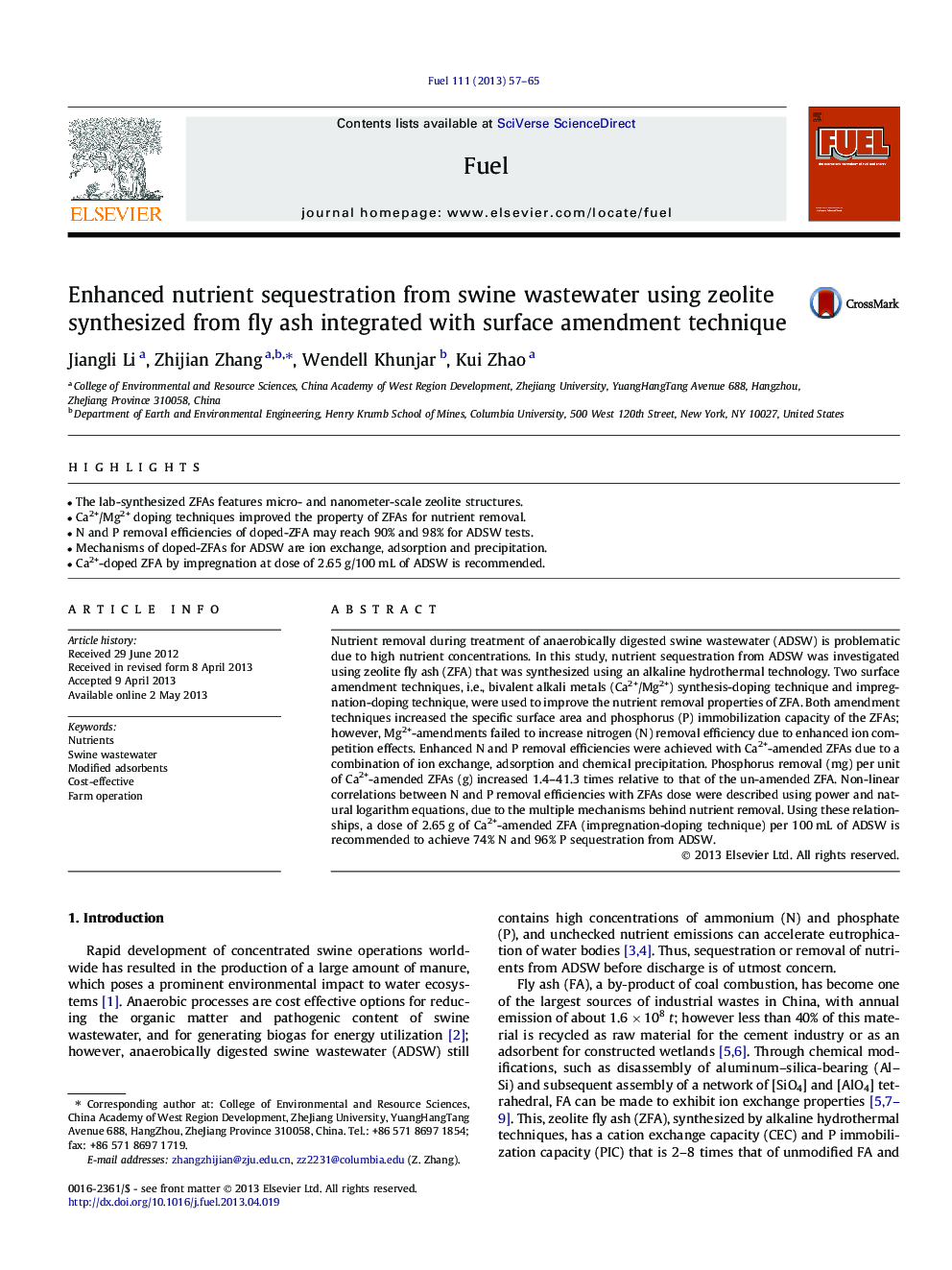| Article ID | Journal | Published Year | Pages | File Type |
|---|---|---|---|---|
| 6640216 | Fuel | 2013 | 9 Pages |
Abstract
Nutrient removal during treatment of anaerobically digested swine wastewater (ADSW) is problematic due to high nutrient concentrations. In this study, nutrient sequestration from ADSW was investigated using zeolite fly ash (ZFA) that was synthesized using an alkaline hydrothermal technology. Two surface amendment techniques, i.e., bivalent alkali metals (Ca2+/Mg2+) synthesis-doping technique and impregnation-doping technique, were used to improve the nutrient removal properties of ZFA. Both amendment techniques increased the specific surface area and phosphorus (P) immobilization capacity of the ZFAs; however, Mg2+-amendments failed to increase nitrogen (N) removal efficiency due to enhanced ion competition effects. Enhanced N and P removal efficiencies were achieved with Ca2+-amended ZFAs due to a combination of ion exchange, adsorption and chemical precipitation. Phosphorus removal (mg) per unit of Ca2+-amended ZFAs (g) increased 1.4-41.3 times relative to that of the un-amended ZFA. Non-linear correlations between N and P removal efficiencies with ZFAs dose were described using power and natural logarithm equations, due to the multiple mechanisms behind nutrient removal. Using these relationships, a dose of 2.65Â g of Ca2+-amended ZFA (impregnation-doping technique) per 100Â mL of ADSW is recommended to achieve 74% N and 96% P sequestration from ADSW.
Related Topics
Physical Sciences and Engineering
Chemical Engineering
Chemical Engineering (General)
Authors
Jiangli Li, Zhijian Zhang, Wendell Khunjar, Kui Zhao,
